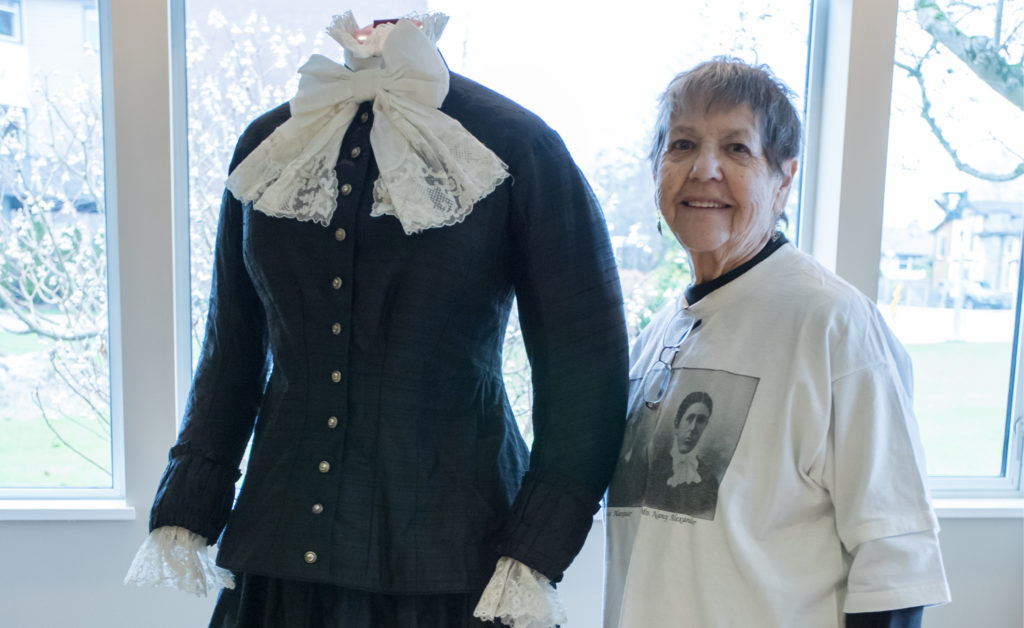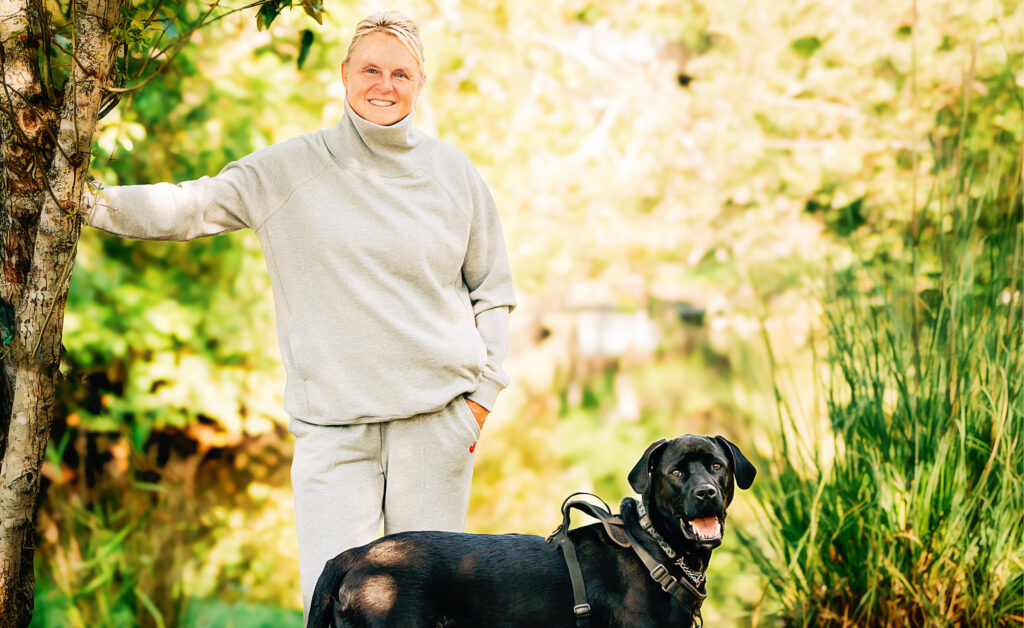by Jamila Douhaibi | photo by Kathryn Alvarez Photography –
Meet your neighbours from 1858. That was the year Black pioneers Charles and Nancy Alexander migrated from St. Louis, Missouri to Saanich.
Their story and connection with the community has been shared by their direct descendant, Karen Alexander Hoshal. Karen is a founding member of the BC Black History Society and loves telling the story of not only her family, but other Black families that lived in the area. Rather than growing up learning about her ancestors, Karen says that she “spent a whole year tromping through cemeteries” and finding old pictures and newspaper clippings from the time.
The stories she found were not only about her great grandparents, but also about the governor at the time, James Douglas. The governor believed that the United States would claim the southern part of Vancouver Island and sent letters inviting families to move here. The result was that when the 49th parallel was created in Ladysmith, the Island wasn’t separated between the two countries.
Even though Charles and Nancy themselves were not fleeing from slavery, Karen says that it was mainly Black families that responded to the governor’s letter because they wanted to come to a freer place. And though it wasn’t well known until after he had died, “James Douglas was half Black himself,” says Karen.
Leaving behind work at a grain mill in Missouri, Nancy and Charles settled into raising 12 children on a small farm in Saanich. There was no segregation or separate communities because people were just buying whatever land was available at the time. Charles was both a carpenter and a gold panner. He helped build several schools and was a trustee on the Saanich school board. He also designed and built the South Saanich Methodist Church (now Central Saanich United) on East Saanich Road. Karen still attends the church that her great grandparents and their neighbours built over a century ago.
When Charles wasn’t at home, he was on the Fraser River panning for gold. Karen says that he would be gone for a couple of months and then come home again to farm and build. As she searched through the mid-1800s, she found just as many questions as answers for that time. For instance: how did people get back and forth from Vancouver Island to the mainland to go in search of gold? Was there a small, infrequent ferry or did people cross in another way?
Some answers are tangible, like Nancy’s 60th wedding anniversary dress and the professional photograph of the couple that accompanies it. Karen says that the dress is still in excellent condition – floor length, made of black cotton and it “weighs a ton.” It seems surprising that a dress for this occasion would be black, but Karen explains that women only got a new dress every five to six years and laundry wasn’t being done every week. Women would accessorize the dress for different occasions, like the white shirt with lace ruffles that went along with this dress. But black attire worked the best for a life around farm animals and machinery, and could still be worn for church on Sundays.
Karen continues to share the story of her great grandparents and other families throughout the year because “Black history is not just for February.” She brings Nancy’s heavy black dress and newspaper articles to put on display (shown here at the Sidney/North Saanich Library in February) while she tells of her history and encourages others to share and explore their own. She believes that the more we know about each other, the more we will understand each other and grow together – so that learning about the history of neighbours that lived here 150 years ago is just as important as learning the stories of the neighbours that we live next to now.




